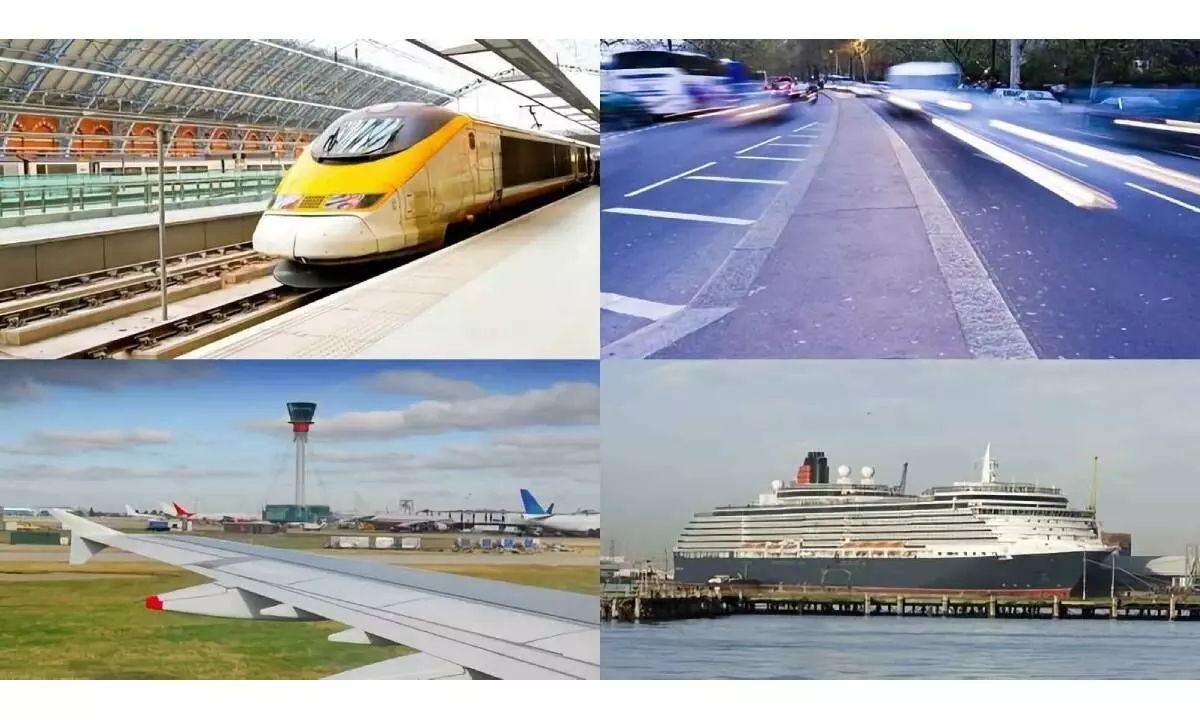Aviation rules despite faster trains and better rail connectivity
Major airports are once again congested, while delays and system meltdowns have become commonplace
image for illustrative purpose

Why drive to your neighbouring city or region when you can fly? Over the past 30 years or so, the standard response to such a query has been because driving is cheaper, more convenient and probably faster door to door. That may not be true for much longer, however.
Advances in aerospace technology, new attitudes about travel, and a growing ecosystem of established players and startups could inspire resurgence in regional air mobility.
Aviation’s rapid recovery from Covide-19 demonstrates just how important flying is to people and to businesses. Parallel to aviation’s recovery, the governments and public are increasingly focused on sustainability; their concerns will help shape the future of the aviation industry, which is responsible for approximately four per cent of anthropogenic global warming. New initiatives and policy frameworks seek to lower the climate impact of aviation, including regulatory mandates for emission reductions and sustainable fuel-blending, goes the industry opinion. These trends point at the opportunity for growth in sustainable regional air travel.
The priority for most travellers is to get from point A to B quickly and easily. But on the road, the typical driver in the United States loses 51 hours annually due to congestion while in the United Kingdom, drivers lose 80 hours annually. In 39 per cent of US metro areas and 42 per cent of European metro areas, traffic was worse in 2022 than it was before the pandemic. Major airports are once again congested, delays are common, and system meltdowns regularly make headlines. More than 190,000 flights were cancelled in the United States alone in 2022. Compounding the problem, large airports have little room to expand.
More than 200 major airports worldwide—handling 43 per cent of the world’s passengers—are capacity constrained and routinely limit landing slots. These factors, exacerbated by the consolidation of flights at major hubs, make for a frustrating and delay-prone travel experience. They also underscore the unmet demand for a fast transportation mode that avoids congested roads and major airports.
Some 4.7 billion people are expected to travel in 2024, an historic high that exceeds the 4.5 billion recorded in 2019.
Passenger revenues are expected to reach $717 billion in 2024, up 12% from $642 billion in 2023. Revenue passenger kilometers (RPKs) growth is expected to be 9.8% year on year. Although that is more than double the pre-pandemic growth trend, 2024 is expected to mark the end of the dramatic year-on-year increases that have been characteristic of the recovery in 2021-2023.
The high demand for travel coupled with limited capacity due to persistent supply chain issues continues to create supply and demand conditions supporting yield growth. Passenger yields in 2024 are expected to improve 1.8% compared with 2023.
Airline profitability for 2023 performed better than expected in IATA’s June outlook. Revenues for 2023 are now expected to reach $896 billion ($93 billion higher than expected). Expenses also grew to $855 billion ($74 billion higher than the previous forecast). That translates to a $23.3 billion industry wide net profit. While that is significantly above the $9.8 billion forecast in June, the additional $13.5 billion profit is equal to just 1.4% of revenue. The net profit margin is just 2.6% meaning that airlines will have earned on average $5.44 per passenger carried in 2023.
Cargo revenues are expected to fall to $111 billion in 2024 while their volumes are projected at 61 million tonnes during the year.
On the other hand, railway networks in Europe are so good that all flight routes that are shorter than 400 km should be closed. Train connections are still as fast as air traffic. In terms of profitability, the 400-km mark is the sweet spot. Trips longer than that can, in contrast to shorter journeys, pay off in terms of time and cost with the help of air travel.
Meanwhile, evaluating the performance of Indian Railways (IR) in 2023 reveals a varied landscape. While strides in infrastructure stand out, the year witnessed underwhelming freight loading and financial outcomes, falling short of anticipated growth and projections.
The relevant economic markers are also positive with 3.5% growth in global trade projected for this year. Broadly, belly capacity is back and will carry the majority of air cargo while preighters have disappeared entirely. Dedicated freighters will maintain their usual share of the market.
Other beneficial factors include the continued growth of e-commerce, the reduction in delivery times, and the robust performance of high-value specialized products, such as pharmaceuticals, which seem resilient to the industry’s usual volatility.

